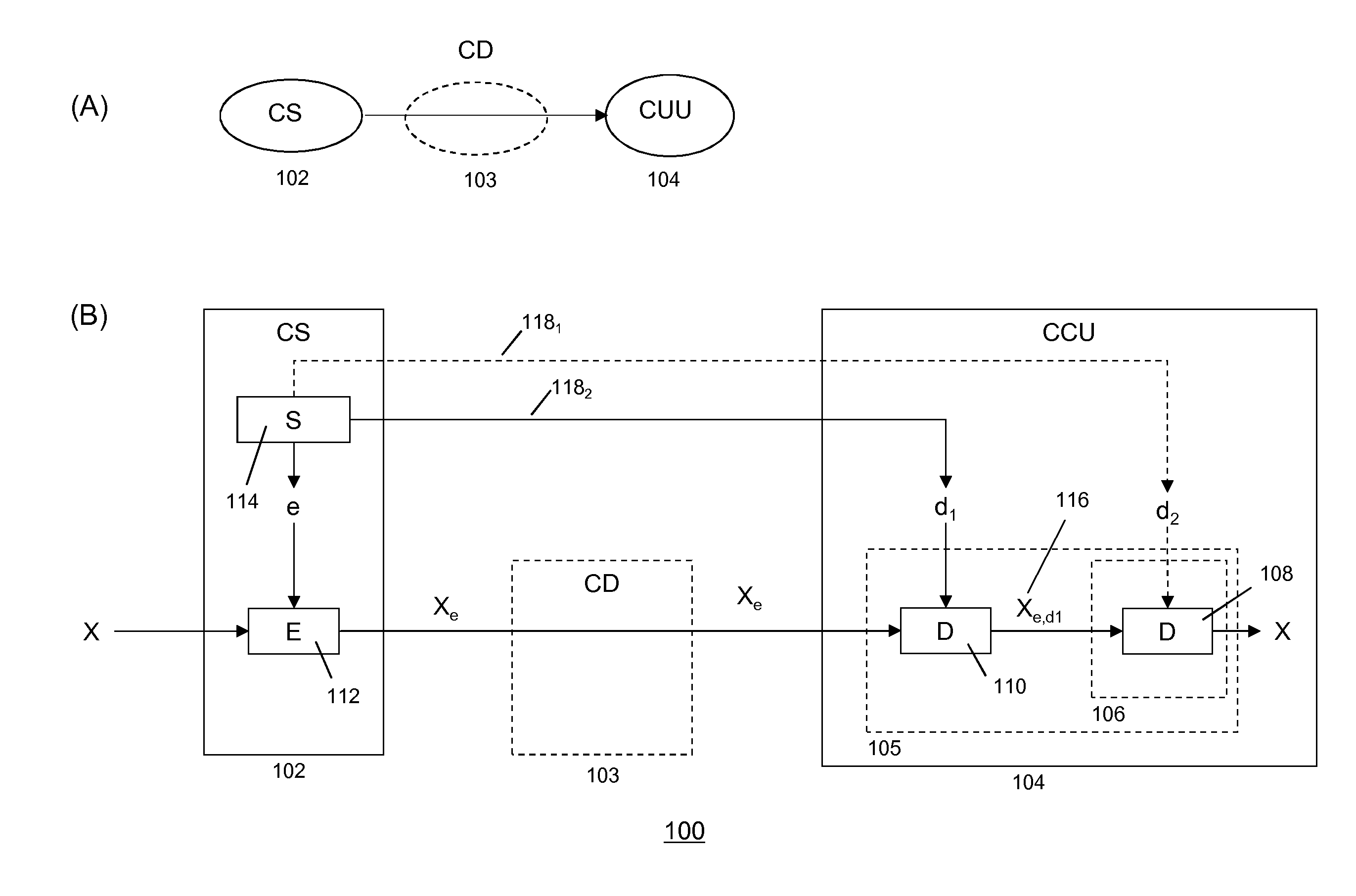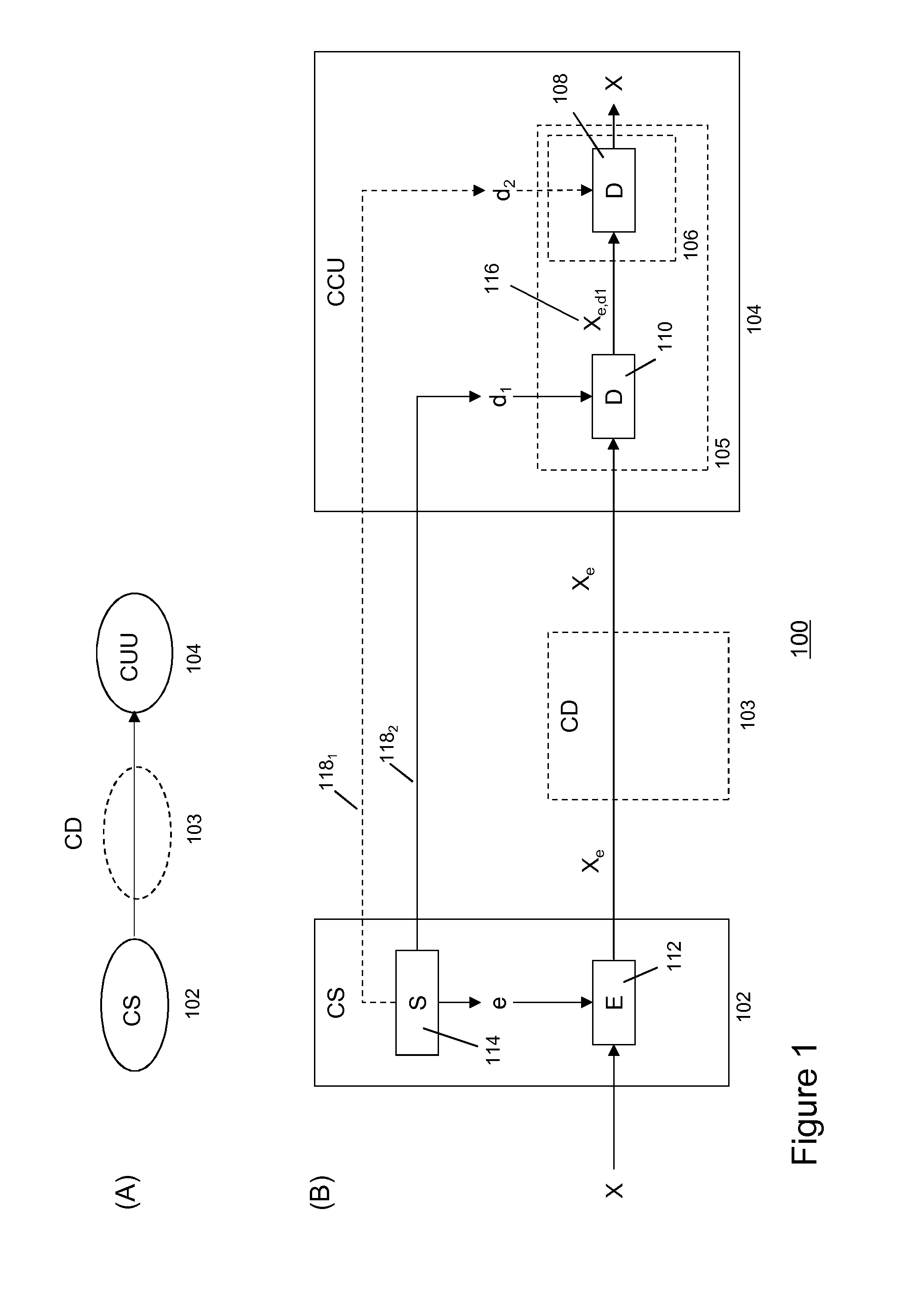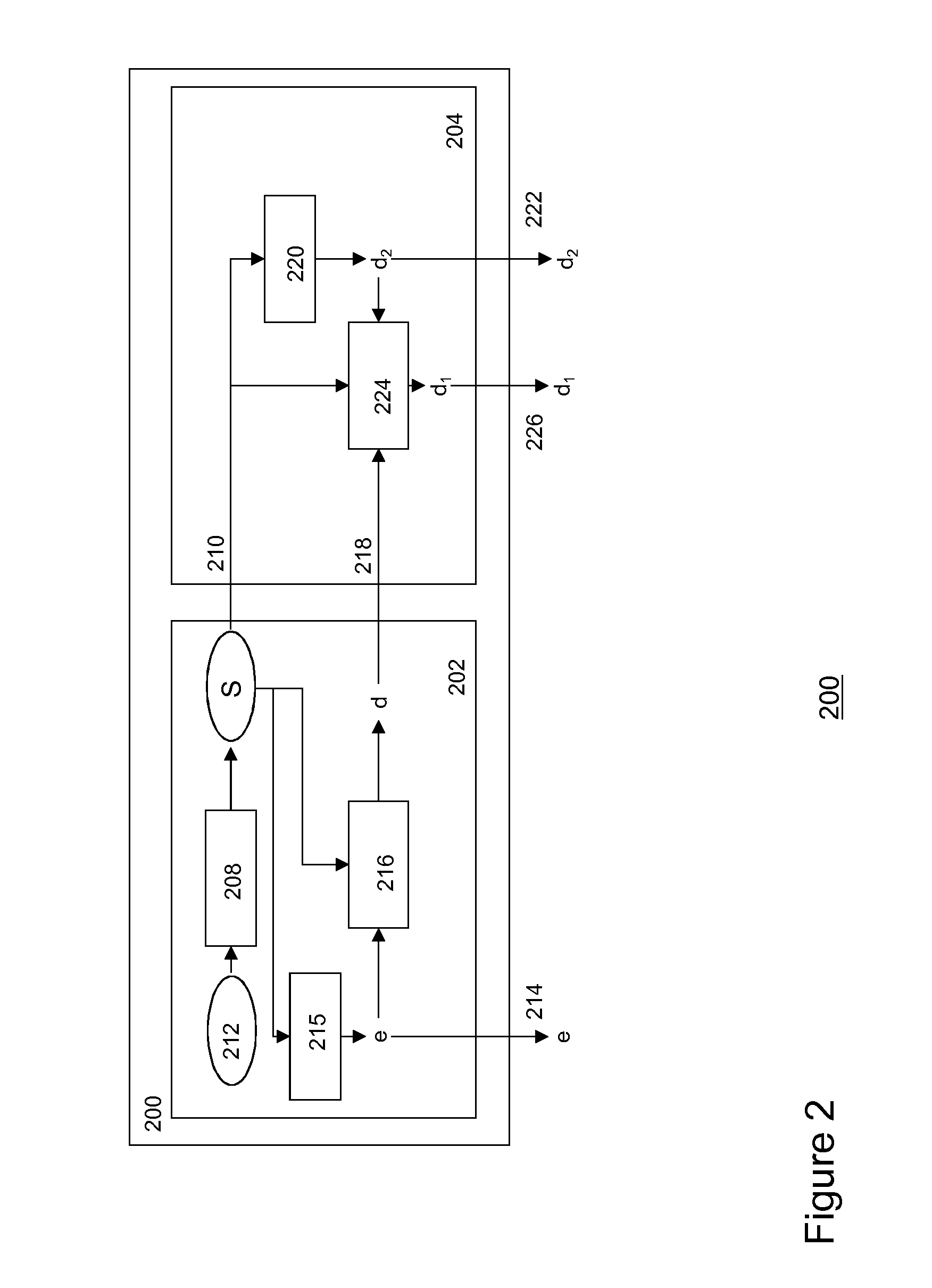Secure Distribution of Content
a content and content technology, applied in the field of content security, can solve the problems of high cost and value of file-based and streaming content, limited damage, and drm systems are less suitable for true mass distribution systems
- Summary
- Abstract
- Description
- Claims
- Application Information
AI Technical Summary
Benefits of technology
Problems solved by technology
Method used
Image
Examples
first embodiment
[0087]For example, in a first embodiment, a first split-key d2 may be pre-configured in the decryption module. Here pre-configuration may include storing or embedding split-key d2 in a secure hardware unit 106, which may be part of the decryption module. The secure hardware unit may be designed as a tamper-free hardware module, which is not or at least very difficult to reverse engineer. Secure hardware units may include flash memory including OTP (one-time programmable) memory technologies in order to render physically secured key storage modules.
[0088]In one embodiment, the secure hardware unit may be part of a Trusted Platform Module (TPM) as specified the Trusted Computing Group. Reference is made to the TPM specification as laid down in international standard ISO / IEC 11889. In that case, the secure hardware unit may be provisioned with at least a split-key upon start-up or initialization of the CCU. During start-up the TPM may establish a secure connection with the secret key g...
second embodiment
[0120]In second embodiment, a split-key cryptosystem may be based on a symmetric stream cipher. FIGS. 3(A) and (B) depict stream ciphers for use in a split-key cryptosystem according to various embodiments of the invention.
[0121]In particular, FIG. 3(A) depicts a linear stream cipher as an encryption algorithm E providing bitwise encryption of content item X into Xe on the basis of encryption key e. The linear stream cipher may use one or more multiple linear feedback shift registers (LFSR) 3021-3023, which may be combined by one or more XOR functions 3041,3042. An LFSR may comprise one or more preconfigured taps 3061,3062. A key k may form the start state of the (in this example three) LFSRs {k1, k2, k3, . . . , km} and the linear stream cipher is linear for used keys k.
[0122]In this split-key cryptosystem encryption key e and first split-decryption key may be generated as a set of random bits {e1, e2, e3, . . . , em} and {d11, d12, d13, . . . , d1m} respectively and split-decrypti...
third embodiment
[0126]In a third embodiment, a split-key cryptosystem may be based on the asymmetrical encryption algorithm known as the RSA encryption scheme. In that case, an encryption / decryption key pair e,d using the following cipher algorithms:[0127]Randomly select two distinct prime numbers p and q of similar bit-length;[0128]Compute n=p*q;[0129]Compute φ(n)=(p−1)*(q−1) wherein φ is Euler's so-called totient function;[0130]Randomly select an integer e such that 1
[0131]Determine d by calculating the multiplicative inverse of e (mod φ(n)), i.e.: d=e−1(mod φ(n)).
[0132]The parameters p,q,φ(n),e,d and n may be stored as secret information for further use. In particular, the value n needs to be shared with the content distributor (if decryption on the basis of split-key information is performed in a CDN) and the CCU, as these entities require n to perform their encryption and decryption operations. The value n may be transferred to the content distributor and the CCU in protocol messages associate...
PUM
 Login to View More
Login to View More Abstract
Description
Claims
Application Information
 Login to View More
Login to View More - R&D
- Intellectual Property
- Life Sciences
- Materials
- Tech Scout
- Unparalleled Data Quality
- Higher Quality Content
- 60% Fewer Hallucinations
Browse by: Latest US Patents, China's latest patents, Technical Efficacy Thesaurus, Application Domain, Technology Topic, Popular Technical Reports.
© 2025 PatSnap. All rights reserved.Legal|Privacy policy|Modern Slavery Act Transparency Statement|Sitemap|About US| Contact US: help@patsnap.com



